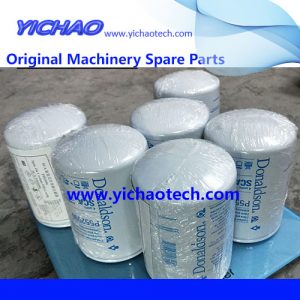How Does a Hydraulic Oil-water Separator Work?
Features of hydraulic oil-water separator:
1) The slag removal is more thorough. The separate spiral slag removal method is adopted. The oily sewage first enters the solid-liquid separation zone, and the large-particle solid substances are retained by the 10mm filter screen, and then discharged to the slag collection bucket through the spiral slag removal rod. Solid substances less than 10mm After passing through the filter screen, it precipitates at the bottom of the solid-liquid separator. Open the valve regularly to clean it.
2) The oil-water separation is more thorough. The hydraulic oil-water separator adopts a conical oil-water separation zone. With oily sewage with different specific gravity, animal and vegetable oils are more likely to float on the water surface. Squeeze, the oil is discharged from the top oil discharge pipe, and only the bottom water can be sent to the sewage discharge port to reach the discharge standard.
3) Split design, more convenient for transportation and installation. The equipment adopts a separate design, and the connecting parts are connected by snaps.

The working principle of the hydraulic oil-water separator is to use the density difference between water and fuel oil, and then rely on the action of the earth’s gravitational field to make it move relatively, the oil rises and the water drops, thus achieving the purpose of oil-water separation. The oil-water separators are divided into industrial-grade oil-water separators, commercial oil-water separators, and household oil-water separators according to their uses. Oil-water separators are mainly used in petrochemicals, fuel locomotives, and sewage treatment. The oil-water separator has a very good oil-water separation effect and is widely used.
1. The oily sewage is sent to the oil-water separator by the sewage pump. After passing through the diffusion nozzle, the large oil droplets float on the top of the left oil collecting chamber.
2. The sewage containing small oil droplets enters the corrugated plate coalescer in the lower part, where the oil droplets are aggregated into larger oil droplets to the right oil collecting chamber.
3. The sewage containing oil droplets with smaller particles passes through the fine filter to remove impurities in the water, and then enters the fiber polymerizer in turn, so that the small oil droplets are aggregated into larger oil droplets and separated from the water.
4. After separation, the clean water is discharged through the discharge port, the dirty oil in the left and right oil collecting chambers is automatically discharged by the solenoid valve, and the dirty oil separated in the fiber aggregator is discharged by the manual valve.
Faults that are prone to occur in the oil-water separator:
1. The engine is unstable in acceleration or weak in acceleration and emits black smoke and other faults.
2. The engine emits black smoke, and the damage of the injector will cause the engine to accelerate unstable or weak in acceleration, or to emit black smoke and other failures, and in severe cases, it will directly damage the engine. Due to the finer workmanship of the fuel injector, its price is also relatively high. Based on the above reasons, when there is a problem with the oil-water separator, it must be replaced in time.
3. Carbon deposits, if the oil-water separator is damaged, the water and impurities in the diesel oil will pass through the filter device, and then accumulate in the intake valve, intake port, and cylinder, forming hard carbon deposits over time, which will affect the work of the engine. In severe cases, the engine will be destroyed.


